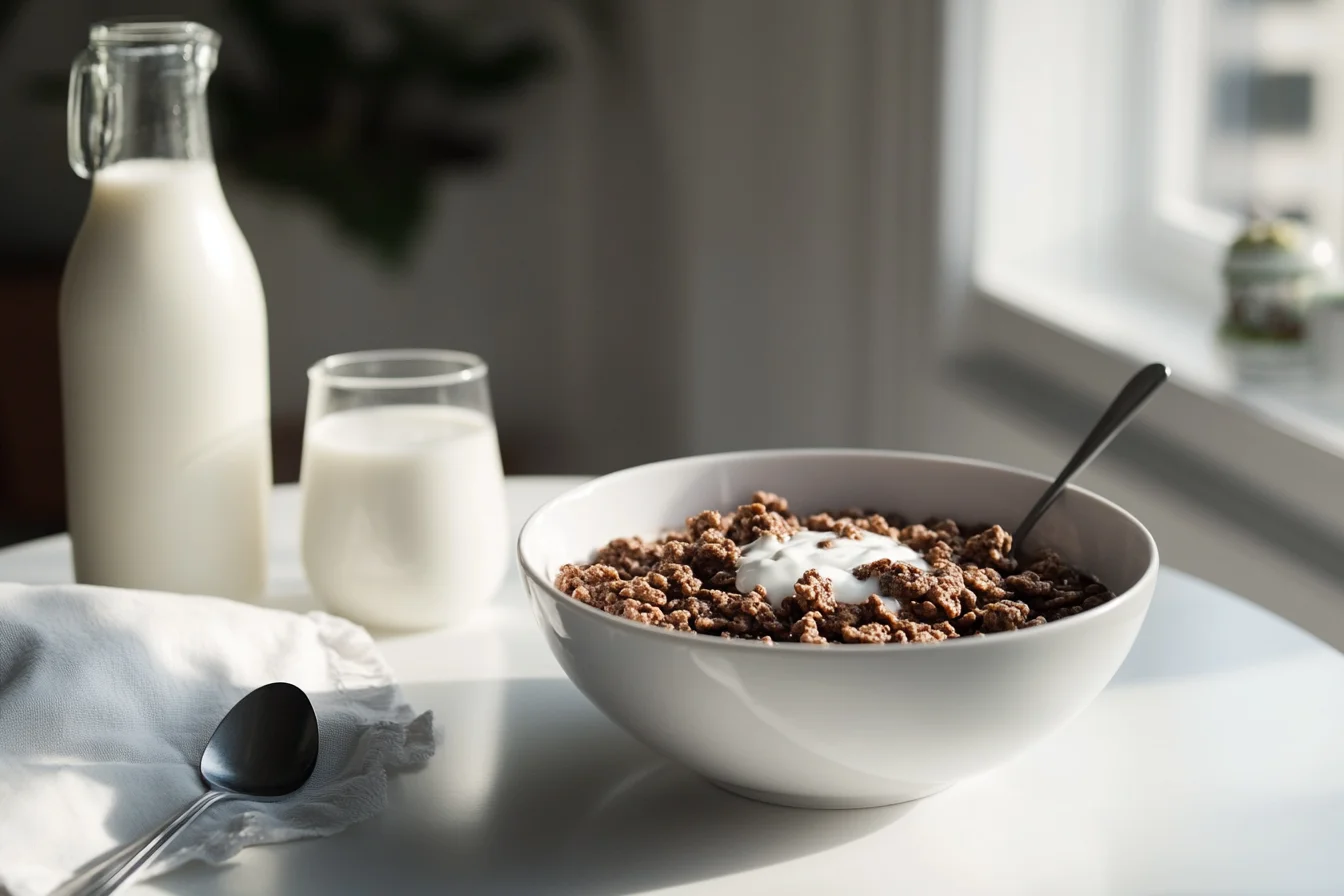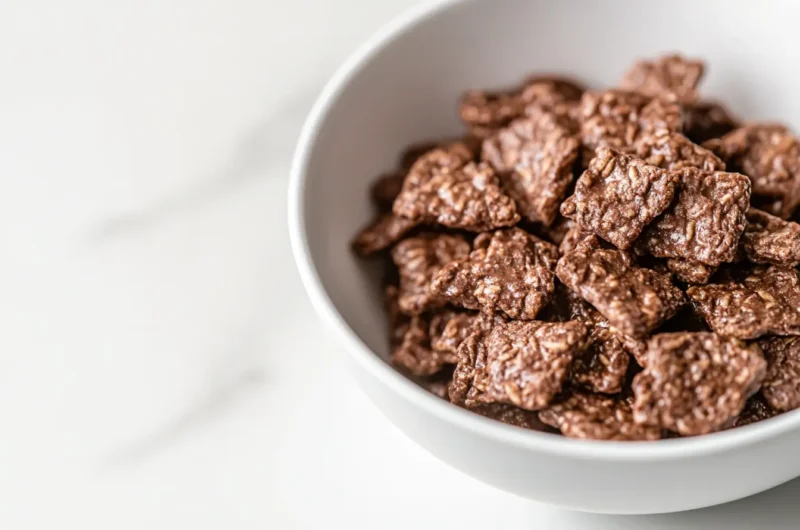Wake Up to a Bowl of Happiness!
Chocolate cereal isn’t just breakfast—it’s a delicious start to your day packed with flavor and fun. With every crunchy bite coated in rich, chocolatey goodness, it’s a treat that makes mornings brighter. Whether you’re fueling up for a busy day, indulging in a quick snack, or enjoying a comforting late-night treat, chocolate-cereal delivers joy in every spoonful.
Perfect for kids and adults alike, it’s the ultimate way to add a little sweetness to your routine while staying energized and ready to take on the day.
Homemade Chocolate Cereal Recipe
Course: BreakfastCuisine: AmericanDifficulty: Easy4 cups of cereal
servings15
minutes15
minutes120–150 calories per 1/2 cup serving
kcalThis homemade chocolate cereal is crispy, chocolatey, and perfect for breakfast or a snack. It’s easy to make and can be customized with gluten-free or dairy-free options.
Ingredients
Dry Ingredients
13/4 cups all-purpose flour (or gluten-free flour blend)
1/2 cup unsweetened cocoa powder
1/3 cup granulated sugar (or coconut sugar)
1/4 teaspoon salt
1/2 teaspoon baking sodaWet Ingredients
1 teaspoon vanilla extract
1/4 cup melted unsalted butter (or coconut oil for dairy-free)
1/2 cup milk (or plant-based alternative like almond or oat milk)Optional Additions
1 teaspoon cinnamon for a subtle spice
1 tablespoon maple syrup or honey for natural sweetness
Directions
- Preheat the Oven
Preheat the oven to 325°F (165°C).
Line a large baking sheet with parchment paper or a silicone baking mat. - Mix the Dry Ingredients
In a large bowl, whisk together:
✔ Flour
✔ Cocoa powder
✔ Sugar
✔ Salt
✔ Baking soda
Make sure the mixture is evenly combined. - Combine the Wet Ingredients
In a separate bowl, whisk together:
✔ Melted butter (or coconut oil)
✔ Milk
✔ Vanilla extract
If using maple syrup or honey, add it now. - Form the Dough
Gradually mix the wet ingredients into the dry ingredients.
Stir until a dough forms. It should be soft and pliable but not too sticky or dry.
If too dry, add 1 tablespoon of milk at a time until smooth.
If too sticky, add 1-2 tablespoons of flour. - Roll Out the Dough
Place the dough between two sheets of parchment paper.
Roll it out to ⅛ inch thickness (thinner dough makes crunchier cereal).
Remove the top parchment sheet and transfer the dough (on the bottom sheet) to a baking sheet. - Cut Into Cereal Shapes
Use a pizza cutter or sharp knife to cut the dough into ½-inch squares.
For fun shapes, use small cookie cutters.
Separate the pieces slightly to prevent sticking. - Bake the Cereal
Bake at 325°F for 15-18 minutes or until the cereal feels dry and crisp.
Tip: Turn off the oven and let the cereal sit inside for 5 extra minutes to ensure full crisping. - Cool and Store
Let the cereal cool completely on the baking sheet before handling.
Break apart any stuck-together pieces.
Store in an airtight container at room temperature for up to 2 weeks.
If the cereal softens, re-crisp it in a 300°F oven for 5 minutes. - Serving Ideas
Classic Breakfast: Serve with milk or yogurt.
Crunchy Topping: Sprinkle over ice cream, smoothies, or parfaits.
Snack On the Go: Eat plain as a crunchy treat.
Flavor Boost: Add a pinch of sea salt or extra cinnamon before baking. - Final Notes & Why This Works
✔ Lower oven temp & longer bake time = better crunch.
✔ Baking soda reduced to prevent bitterness.
✔ Dough consistency tips for easy rolling and cutting.
✔ Storage solutions to keep the cereal crisp.
Table of Contents
Recipes Using Chocolate Cereal
Chocolate cereal isn’t just for breakfast—it’s a versatile ingredient that can be transformed into creative snacks, desserts, and beverages. From crunchy cereal bars to indulgent milkshakes, these recipes highlight fun and delicious ways to make the most of your chocolate-cereal.
Chocolate Cereal Bars
These no-bake bars are perfect as an afternoon snack or a lunchbox treat. They’re quick to prepare, kid-friendly, and pack the perfect combination of crunch and sweetness.
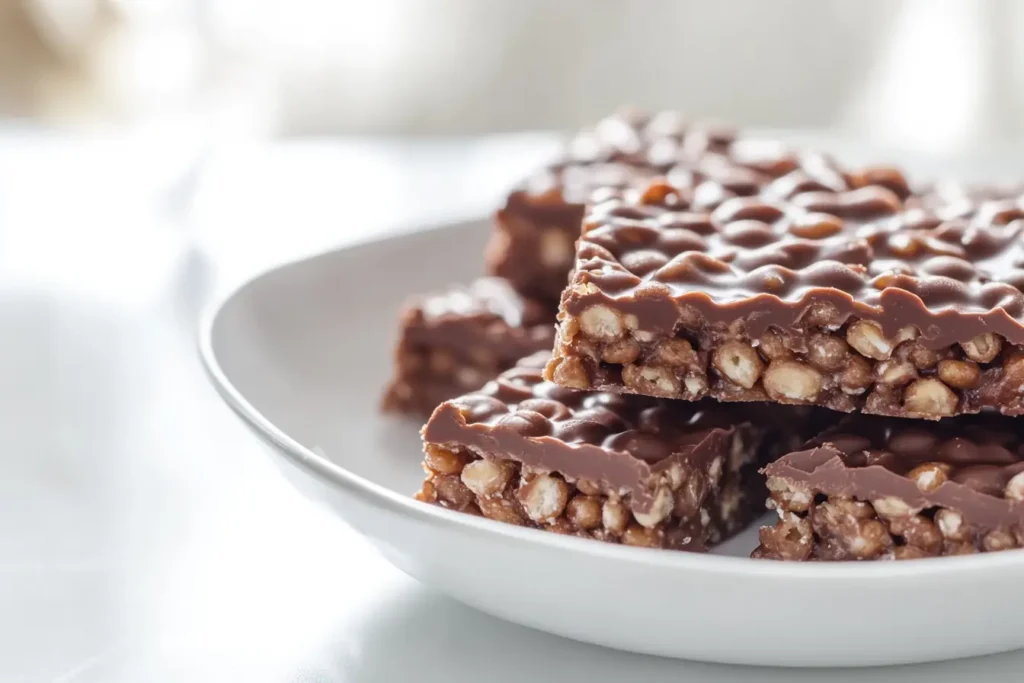
Ingredients:
- 4 cups chocolate cereal (e.g., Cocoa Pebbles or Cocoa Krispies)
- ½ cup honey or maple syrup
- ½ cup peanut butter or almond butter
- ¼ cup chocolate chips (optional)
Instructions:
- In a saucepan over low heat, melt the peanut butter and honey together, stirring until smooth.
- Remove from heat and pour the mixture over the chocolate cereal in a large mixing bowl. Stir until evenly coated.
- Optional: Mix in chocolate chips for extra indulgence.
- Press the mixture firmly into a lined 8×8-inch pan.
- Refrigerate for at least an hour before cutting into bars.
- Store in an airtight container for up to a week.
Pro Tip: For added texture, toss in chopped nuts, dried fruit, or mini marshmallows before pressing into the pan.
Dessert Toppings
Chocolate cereal can be crushed and used as a fun topping for a variety of desserts, adding crunch and flavor.

Ideas for Use:
- Ice Cream: Sprinkle crushed chocolate-cereal over a bowl of vanilla or chocolate ice cream. Top with whipped cream and a cherry for a sundae-like treat.
- Cakes and Cupcakes: Use as a decorative and tasty topping for frosting on cakes or cupcakes.
- Yogurt Parfaits: Layer yogurt, fresh fruit, and chocolate cereal in a glass for a quick and easy dessert.
- Pudding: Add crushed cereal on top of chocolate or vanilla pudding for a crunchy contrast.
Pro Tip: For a twist, mix crushed chocolate-cereal with a drizzle of melted chocolate and let it harden before using as a topping.
Chocolate Cereal Milkshakes
Turn your favorite cereal into a creamy, indulgent milkshake that’s perfect as a dessert or a fun snack.
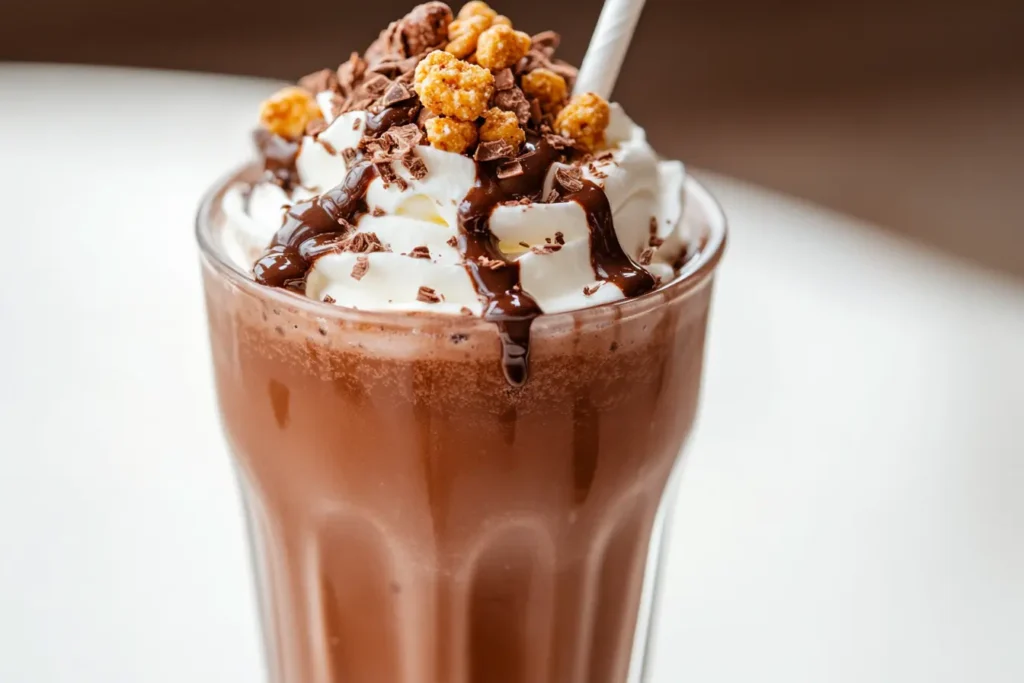
Ingredients:
- 2 cups chocolate-cereal
- 2 cups milk or a plant-based alternative
- 3 scoops vanilla or chocolate ice cream
- Whipped cream (optional)
- Chocolate syrup (optional)
Instructions:
- Blend the cereal and milk together until smooth, then strain to remove any leftover cereal pieces.
- Return the flavored milk to the blender and add ice cream. Blend until thick and creamy.
- Drizzle chocolate syrup inside a glass for a decorative touch before pouring in the milkshake.
- Top with whipped cream, a sprinkle of chocolate-cereal, or a drizzle of chocolate syrup for garnish.
- Serve immediately with a straw and enjoy!
Pro Tip: Add a pinch of instant coffee granules to the blender for a mocha-flavored twist.
These recipes turn your everyday chocolate-cereal into exciting new treats that are sure to delight! Whether you’re preparing snacks for kids, hosting a dessert night, or treating yourself, these ideas make chocolate cereal a versatile and fun ingredient.
👉 Looking for something savory? If you’re in the mood for a warm and comforting meal, check out our guide on The Best Sandwiches for Potato Soup—perfect for a cozy lunch or dinner and for Breakfast!
The History of Chocolate cereal
Chocolate-cereal has become a beloved breakfast staple worldwide, blending the indulgent flavor of chocolate with the convenience of ready-to-eat cereals. Its origins, evolution, and the key brands that popularized it offer a fascinating glimpse into the history of breakfast foods and the innovation behind its enduring appeal.
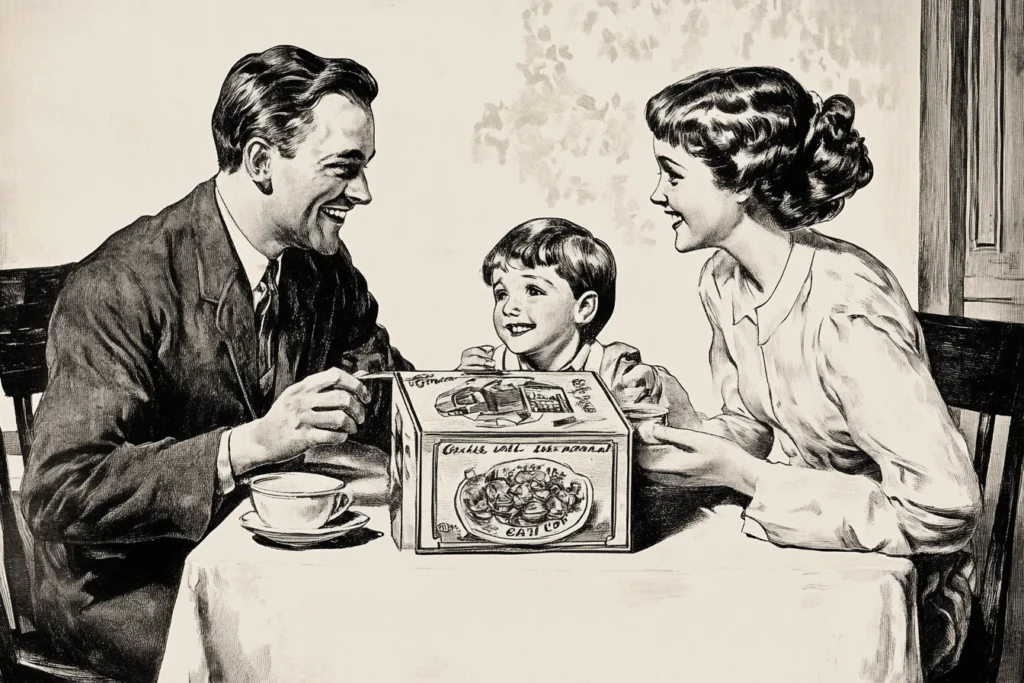
Origins of Cereal
The concept of sweetened cereals gained traction in the early 20th century, as manufacturers sought to make breakfast more appealing to children. Chocolate, already popular as a confectionery treat, was eventually incorporated to create a more indulgent breakfast experience.
By the mid-20th century, cereal companies began experimenting with chocolate flavors, offering a novel twist on traditional grain-based products. These early chocolate-cereals were marketed as fun, sweet alternatives that combined the energy of grains with the richness of chocolate, instantly capturing consumer interest.
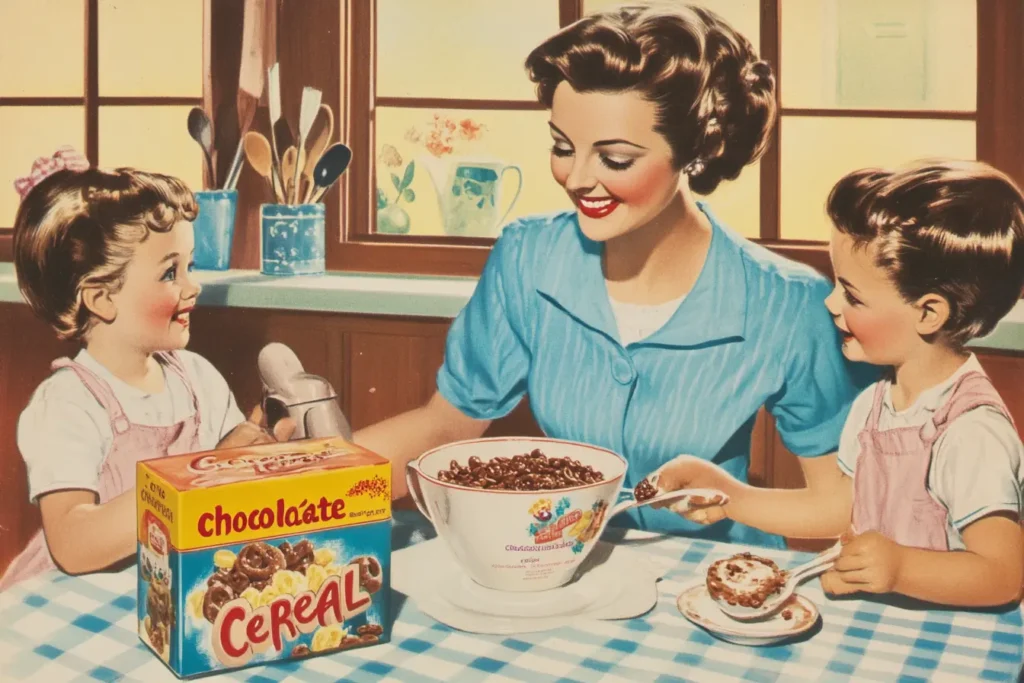
“This is an AI-generated vintage-style illustration created using MidJourney, not an actual historical advertisement”
Evolution Over Time
Initially marketed as a treat-like breakfast, chocolate-cereal appealed to families seeking variety in their morning routines. Over the decades, manufacturers:
- Enhanced flavor profiles to deliver a richer chocolate taste.
- Incorporated whole grains to meet changing nutritional demands.
- Reduced sugar content and added vitamins in response to growing health-conscious trends.
By the 1980s and 1990s, chocolate-cereals became a global phenomenon. Advertisements targeted children, emphasizing their playful appeal with catchy jingles, colorful packaging, and memorable mascots. More recently, the focus has shifted to creating healthier options while maintaining the chocolatey indulgence consumers love.
Key Brands That Popularized It
Several major brands played pivotal roles in the rise and popularity of chocolate-cereal:
- Kellogg’s Cocoa Krispies:
- Introduced in the 1950s, this cereal combined crispy rice with a rich chocolate flavor.
- It quickly became a breakfast favorite, known for its ability to turn milk into a chocolatey treat.
- General Mills Cocoa Puffs:
- Launched in the 1960s, Cocoa Puffs gained iconic status with its distinctive chocolate taste and playful mascot, Sonny the Cuckoo Bird, who famously declared, “I’m cuckoo for Cocoa Puffs!”
- Post Cocoa Pebbles:
- Released in the 1970s, Cocoa Pebbles stood out with its branding tied to popular culture, featuring characters from The Flintstones. Its fun, small-sized pieces and rich flavor made it a standout in the cereal aisle.
From its early days as a sweet breakfast innovation to its current place as a versatile and nostalgic favorite, chocolate-cereal has continued to evolve with changing consumer tastes. Whether as a breakfast treat, a dessert topping, or a nostalgic snack, it remains a beloved staple in kitchens around the world.
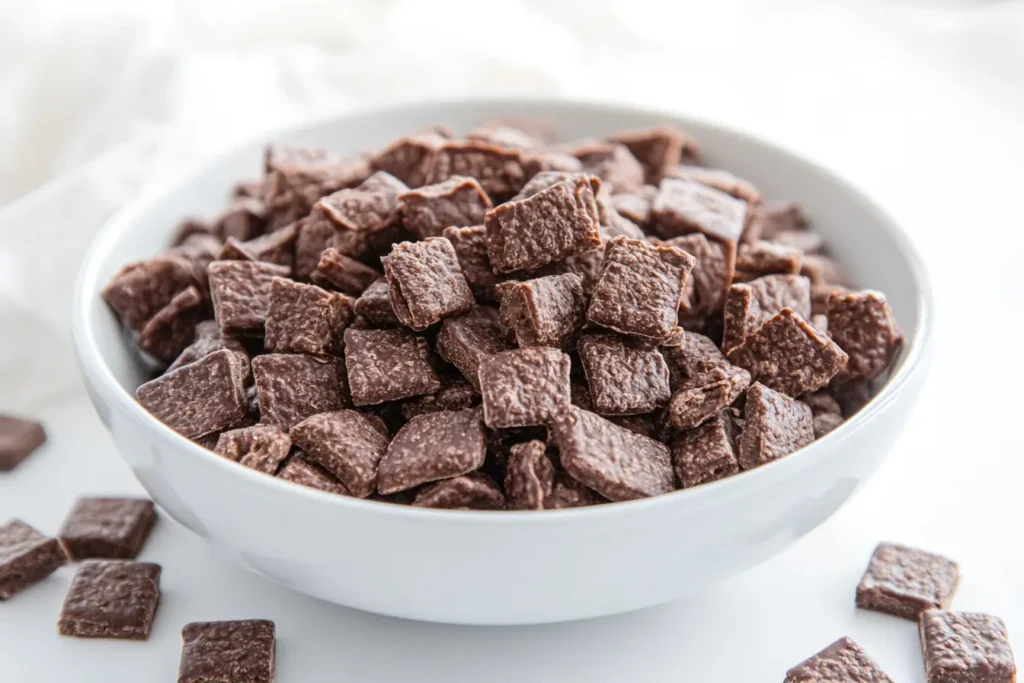
Nutritional Profile & Expert Opinions
Chocolate-cereal is a convenient and delicious breakfast option, but its nutritional value varies depending on the brand and ingredients. Understanding its benefits and potential drawbacks can help you make informed choices.
Typical Ingredients
Most chocolate cereals contain a mix of grains, cocoa, sweeteners, and added vitamins. Common ingredients include:
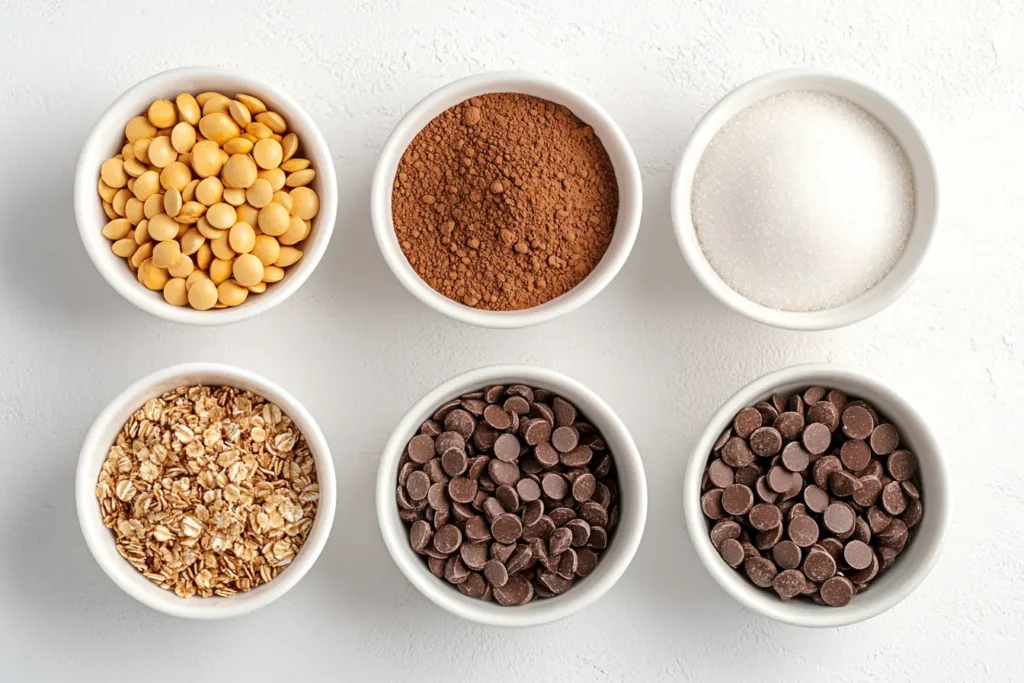
- Grains – Corn, wheat, or rice as the base. Some brands use whole grains for added fiber.
- Cocoa Powder or Chocolate Flavoring – Provides the signature chocolate taste.
- Sugar – Many cereals contain high amounts of added sugar, though some brands offer low-sugar or sugar-free alternatives.
- Milk Powder or Malt Extract – Enhances texture and flavor.
- Vitamins & Minerals – Often fortified with iron, vitamin D, and B vitamins.
Health Benefits
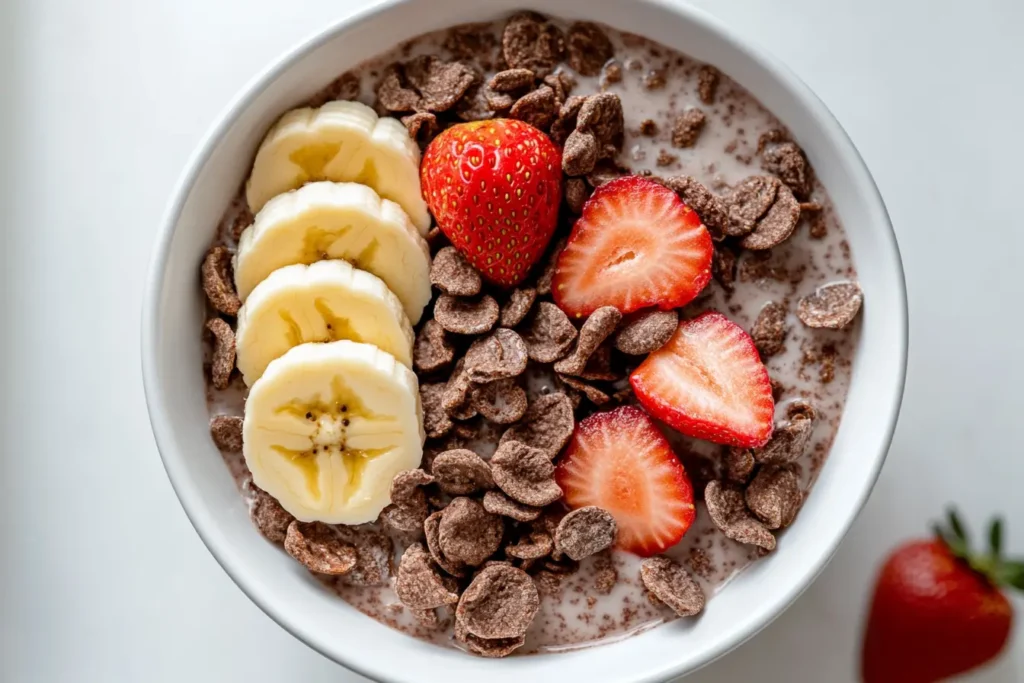
- Quick Energy Source – High in carbohydrates, making it ideal for a fast breakfast or pre-workout snack.
- Convenience – Ready-to-eat and easy to prepare, saving time in busy routines.
- Fortification – Many brands include added nutrients to support dietary needs.
Common Health Concerns

- High Sugar Content – Excess sugar can lead to energy crashes and weight gain. Look for options with less than 8–10g of sugar per serving.
- Processed Ingredients – Some cereals contain refined grains and artificial additives, reducing nutritional quality.
- Low Protein & Fiber – Many traditional chocolate-cereals lack protein and fiber, which are essential for keeping you full longer.
Healthier Alternatives & Expert Tips
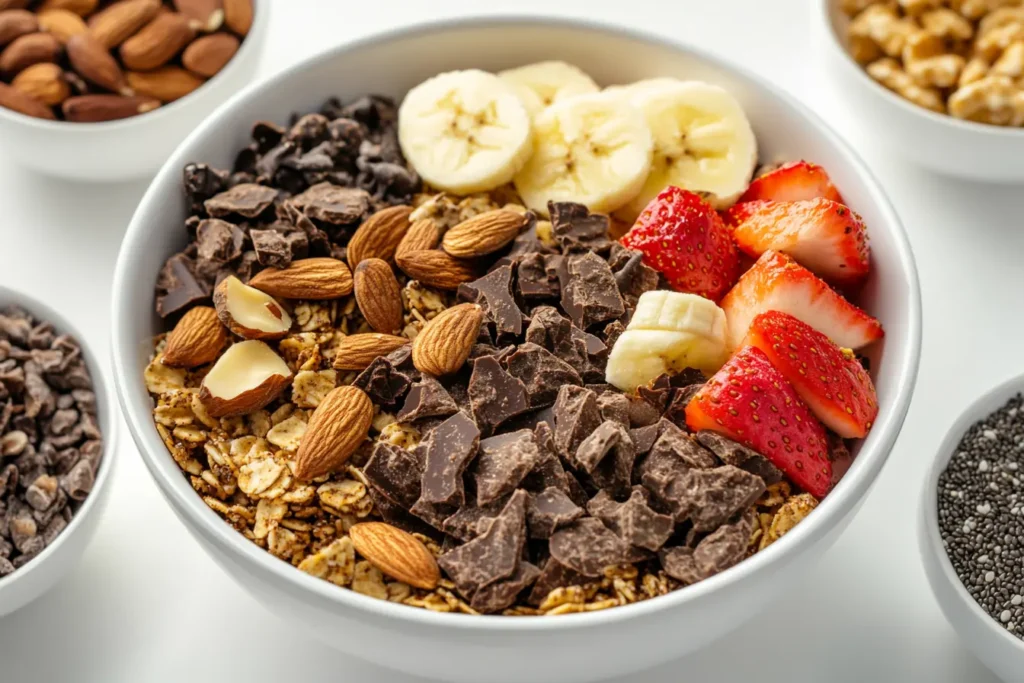
- Choose Whole Grains – Look for “whole grain” as the first ingredient for more fiber and nutrients.
- Check Sugar Levels – Opt for cereals labeled “low sugar” or “no added sugar.”
- Boost Nutrition – Pair chocolate-cereal with milk, yogurt, nuts, or fresh fruit to add protein and fiber.
- Mix & Match – Combine chocolate cereal with a plain, high-fiber cereal to reduce sugar intake.
By making mindful choices, you can enjoy chocolate-cereal as part of a balanced diet while minimizing excess sugar and processed ingredients.
Why Chocolate Cereal is Popular
Chocolate-cereal has remained a favorite for decades, thanks to smart marketing strategies, evolving consumer trends, and its irresistible flavor.
Marketing Strategies That Drive Popularity
- Targeting Families & Kids – Brands use fun packaging, bright colors, and engaging commercials to appeal to children while emphasizing family-friendly breakfast moments.
- Limited Edition Flavors & Seasonal Releases – Companies introduce special variations like chocolate-caramel, double chocolate, or holiday-themed editions to keep consumers excited.
- Health-Focused Rebranding – As consumer awareness of nutrition grows, many brands highlight whole grains, lower sugar content, and added vitamins to attract health-conscious buyers.
- Social Media & Influencer Promotions – Cereal brands collaborate with influencers, launch viral challenges, and create nostalgia-driven content to engage audiences online.
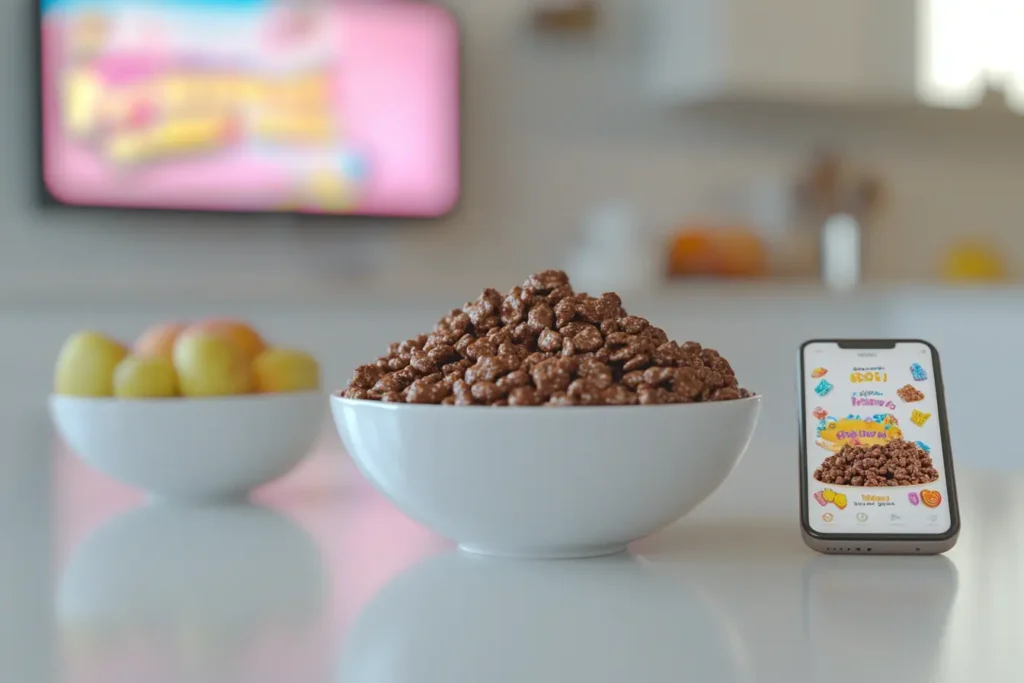
Changing Consumer Trends
- Nostalgia Appeal – Many adults enjoy chocolate-cereal as a nostalgic treat, driving demand for childhood favorites.
- Convenience & Versatility – Beyond breakfast, chocolate-cereal is now marketed as a snack, dessert topping, or ingredient for recipes like cereal bars and milkshakes.
- Health-Conscious Options – The rise of organic, gluten-free, and high-protein chocolate-cereals caters to modern dietary preferences.
From innovative marketing to changing food trends, chocolate-cereal continues to evolve while maintaining its status as a beloved breakfast staple.
The Environmental Impact of Chocolate Cereal
Chocolate-cereal production affects the environment in several ways, from cocoa farming and ingredient sourcing to packaging waste. As sustainability becomes a growing concern, both brands and consumers are making efforts to reduce the ecological footprint of this beloved breakfast staple.
Cocoa Farming & Sustainability Challenges

- Deforestation & Habitat Loss – Cocoa farming has led to significant deforestation in tropical regions, endangering wildlife and reducing biodiversity.
- Soil Degradation – Intensive cocoa cultivation depletes soil nutrients, making farmland less productive over time.
- Fair Trade & Ethical Cocoa Sourcing – Many brands now source Fair Trade or Rainforest Alliance-certified cocoa, which supports sustainable farming, fair wages, and responsible land use.
Manufacturing & Packaging Waste

- Plastic & Cardboard Packaging – Most chocolate-cereals come in cardboard boxes with plastic liners, and while the boxes are recyclable, the plastic bags often end up in landfills.
- Eco-Friendly Packaging Initiatives – Some companies are transitioning to biodegradable bags, recyclable materials, or refillable containers to reduce waste.
- Recycling Challenges – Not all packaging materials are accepted in standard recycling programs, leading to increased waste.
How Consumers Can Make a Difference
- Choose Sustainable Brands – Look for Fair Trade, Rainforest Alliance, or organic certifications on packaging.
- Opt for Recyclable or Minimal Packaging – Support brands that use eco-friendly materials and avoid unnecessary plastic.
- Buy in Bulk – Purchasing in bulk reduces individual packaging waste and lowers overall environmental impact.
- Recycle Properly – Check local recycling guidelines to ensure cereal boxes and packaging materials are disposed of correctly.
By supporting sustainable farming and eco-friendly packaging, both brands and consumers can help reduce the environmental impact of chocolate-cereal while still enjoying its rich, chocolatey goodness. Learn more about sustainable cocoa farming from the Rainforest Alliance or Fair Trade Certified organizations.
Chocolate Cereal in Pop Culture
Chocolate cereal has made its mark in movies, TV shows, and internet culture, becoming a symbol of childhood nostalgia and fun. Its presence in entertainment reinforces its status as a beloved treat across generations.
Chocolate Cereal in Movies & TV Shows
- Sitcoms & Cartoons – Many family-oriented TV shows feature breakfast scenes with chocolate cereal, emphasizing its connection to childhood and family bonding.
- Animated Films – Over-the-top scenes of characters diving into giant bowls of chocolate-cereal add to its playful and indulgent image.
- Comedy Moments – Characters sneaking midnight bowls of cereal or obsessing over their favorite brand are common comedic tropes in sitcoms and movies.
Chocolate Cereal & Internet Culture
- Social Media Trends – Viral challenges, creative recipes, and cereal-inspired desserts frequently trend on platforms like TikTok and Instagram.
- Memes & Nostalgia Posts – Many millennials and Gen Z users share memes about their favorite childhood chocolate cereals, keeping the nostalgia alive.
- YouTube & Food Vlogs – Influencers and food vloggers review classic and new chocolate-cereal varieties, creating discussions around flavor, texture, and best ways to enjoy them.
From classic TV breakfasts to trending online challenges, chocolate-cereal remains a pop culture staple, reminding us that sometimes, breakfast is more than just food—it’s an experience.
FAQs about Chocolate Cereal
Can chocolate cereal fit into a balanced diet?
Yes, chocolate cereal can be part of a balanced diet when eaten in moderation. Pairing it with fresh fruit, yogurt, or nuts can add nutritional value while preventing excess sugar intake.
Are there sugar-free options?
Yes! Many brands offer low-sugar or sugar-free chocolate cereals sweetened with stevia, monk fruit, or natural alternatives. These options allow you to enjoy the chocolatey taste without excess sugar.
How can I make homemade chocolate cereal?
Homemade chocolate cereal is easy to make! Simply mix rolled oats, cocoa powder, and honey or maple syrup. Spread the mixture on a baking sheet and bake at 300°F (150°C) until crisp. This DIY version lets you control ingredients and customize flavors.
Conclusion
Chocolate cereal remains a beloved breakfast and snack, appreciated for its rich flavor, convenience, and nostalgic appeal. Whether enjoyed as a quick morning meal, a crunchy snack, or an ingredient in creative recipes, it continues to be a favorite across generations.
Key Takeaways:
- Versatile & Enjoyable – Chocolate-cereal is more than just a breakfast food; it can be used in desserts, snacks, and even beverages.
- Nostalgic Yet Modern – While it brings back childhood memories, newer versions cater to health-conscious consumers with options like whole grains and lower sugar.
- Balanced Enjoyment – Mindful consumption, such as pairing with protein-rich milk or fiber-filled fruit, helps make chocolate-cereal part of a well-rounded diet.
From classic childhood favorites to modern, health-friendly versions, chocolate-cereal continues to evolve while keeping its fun and indulgent appeal intact.

